Sake Kasu (Sake Lees) A little-known, hidden superfood in Japan.

What is Sake Kasu?
Sake Kasu / From Generation to Generation: A Flavorful Journey with Japanese Sake Kasu and Traditional Kitchen Staples
Sake Kasu, also known as sake lees, is a byproduct of the sake-making process. It is the leftover mash that remains after sake is pressed and filtered. Sake Kasu comes in 2 types. One is called “Ita Kasu” and comes in the form of a sheet with less moisture in it.
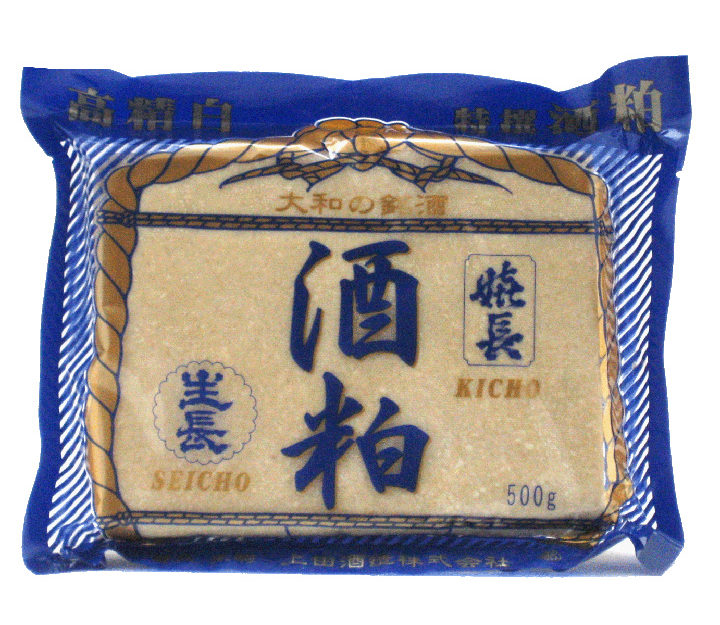
Another is called “Bara Kasu” comes in a moist flakes.
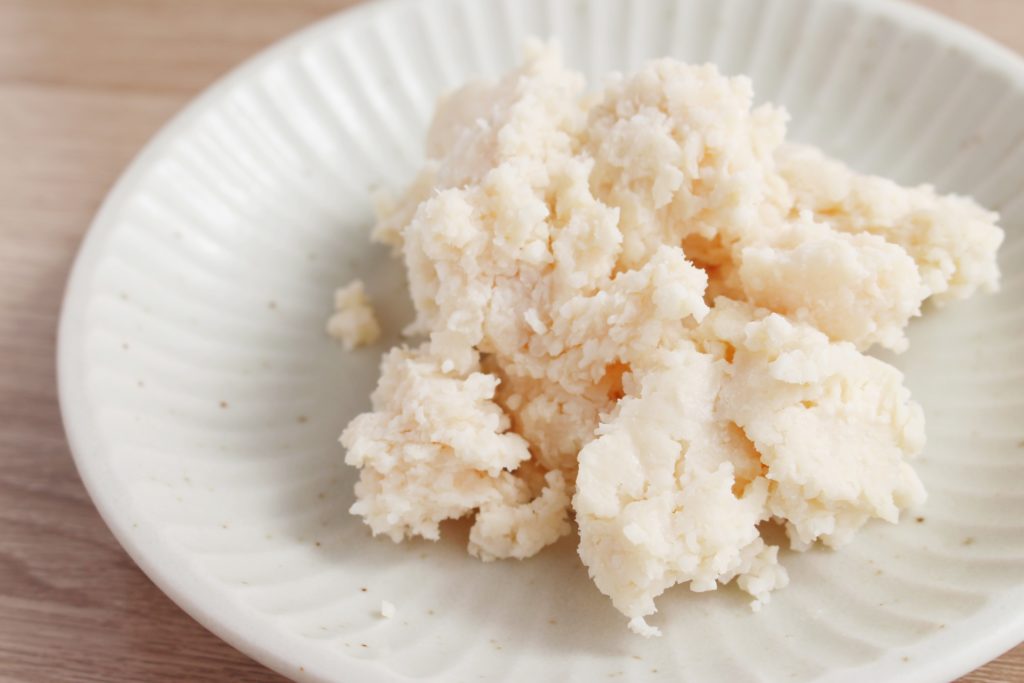
Each of them has the same thick, paste-like consistency.
How to Use Sake Kasu
Sake Kasu is rich in flavors. It is often used in Japanese cuisine for its unique taste and versatility. Here are some common uses of Sake Kasu in Japanese food culture:
- Soup Base:
- Sake Kasu can be dissolved in hot water or broth to create a flavorful soup base. It adds a rich, umami taste to the soup.
- Marinades and Sauces:
- Sake Kasu is used as a marinade for meats and fish. It imparts a delicate sake flavor to the dish. Mix it with soy sauce, mirin, and other seasonings to create a tasty marinade or dipping sauce.
- Pickling:
- Sake Kasu can be used in the pickling process for vegetables. When mixed with salt and other seasonings, it adds a unique taste to pickles.
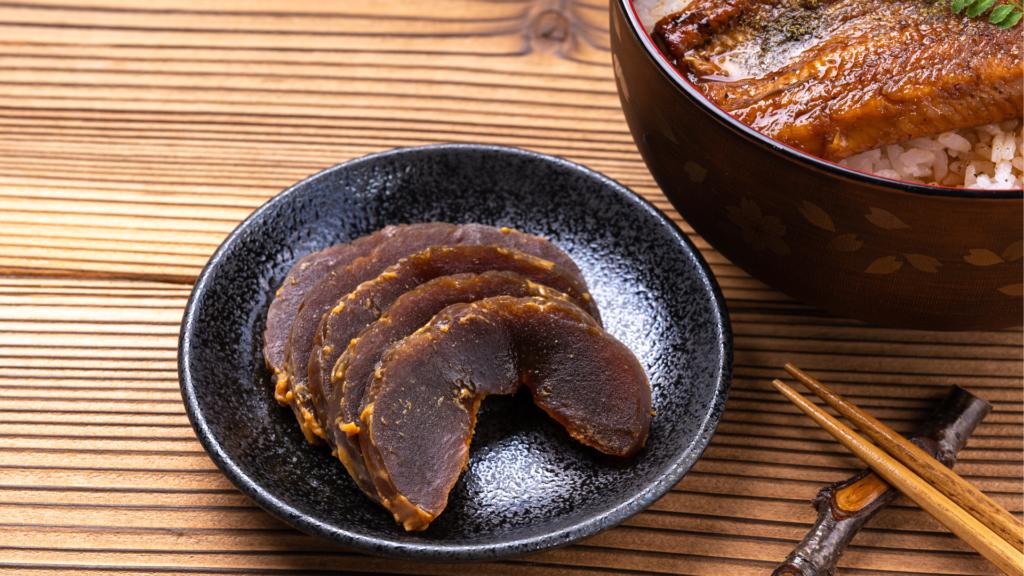
This pickle is called “Nara zuke” and has been pickled in Sake Lees for years to create amber-colored flavorful pickles. It’s absolutely a required taste, but once you understand the tastes, you are going to addict to it.
- Desserts:
- Some Japanese sweets and desserts incorporate Sake Kasu for its distinctive flavor. It can be used in cakes, puddings, or cookies. Once baked, it tastes like cheese!
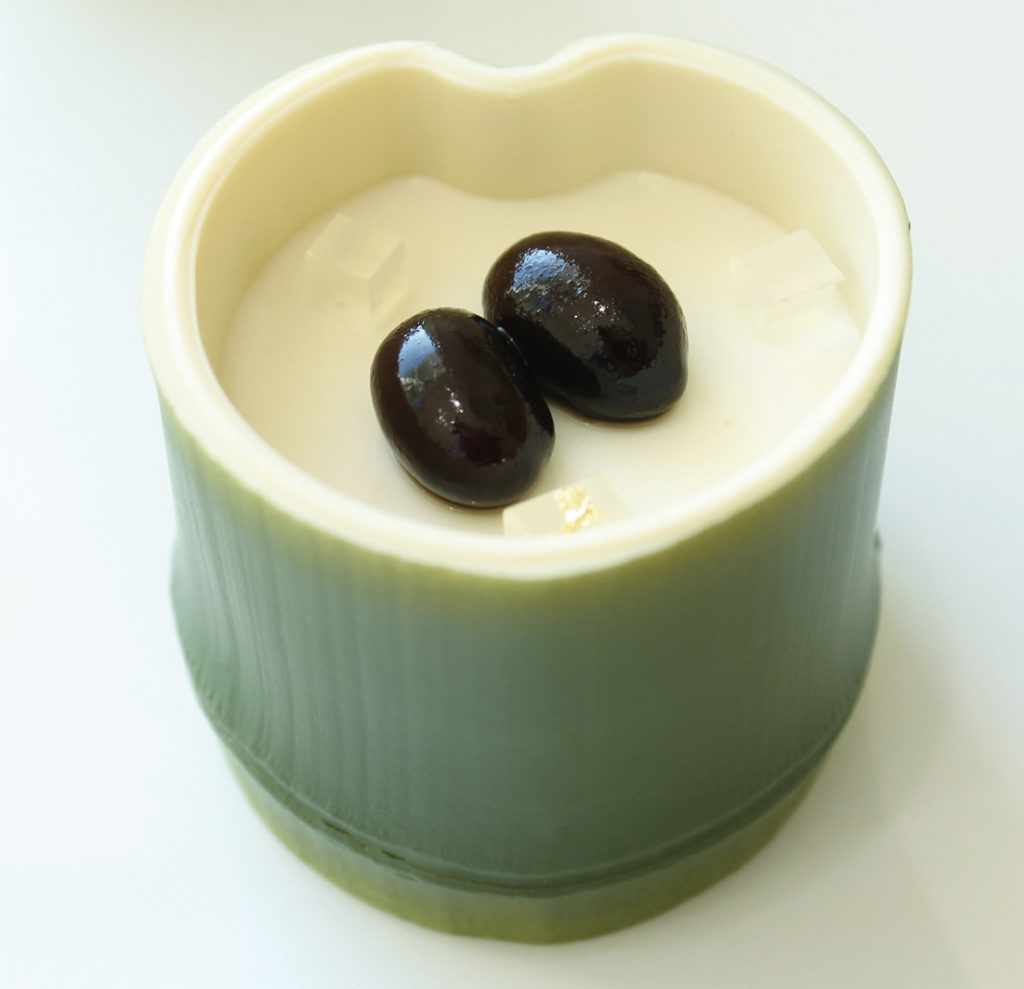
This is the pudding I used to make at my pastry shop. It called “Takehime Purin” literally translate into “Princess Bamboo Pudding!” This pudding won the grand prize at my city’s Sweets Contest, and it is still the No.1 dessert in my city. I had my business over to a local social welfare association, and they are running a business with disabled people.
- Amazake-ish drink
- Amazake is a traditional Japanese sweet, non-alcoholic beverage made from fermented rice. By Using Sake Kasu, you can make a similar beverage of Amazake, giving it a sweet and slightly alcoholic taste.
- Grilled Dishes:
- Sake Kasu can be used as a coating or glaze for grilled dishes. It adds a layer of flavor and helps to keep the meat or fish moist during cooking.
Health Benefit of Sake Kasu
Sake lees are rich in nutrients such as peptides, dietary fiber, oligosaccharides, B vitamins, adenosine, and resistant protein, which are expected to be effective in maintaining health and resolving body problems.
The effects of the nutrients contained in sake lees have been recognized, including improving the intestinal environment and sensitivity to cold, beautifying the skin, and preventing lifestyle-related diseases.
- Probiotics:
- Sake Kasu is a fermented product, and like other fermented foods, it contains beneficial bacteria known as probiotics. Probiotics can support a healthy gut microbiota, which is essential for digestion and overall gut health.
- Nutrient Content:
- Sake Kasu retains some of the nutritional components from rice and the fermentation process. It may contain B vitamins, amino acids, and other nutrients that are produced during the fermentation of rice.
- Antioxidants:
- Fermented foods often contain antioxidants, and Sake Kasu is no exception. Antioxidants help neutralize free radicals in the body, which may contribute to overall health and well-being.
- Digestive Health:
- The probiotics in Sake Kasu may contribute to improved digestion. Maintaining a healthy balance of gut bacteria can aid in the absorption of nutrients and support the overall health of the digestive system.
- Potential Blood Pressure Regulation:
- Some studies suggest that the peptides formed during the fermentation of Sake Kasu may have potential blood pressure-regulating effects. However, more research is needed to fully understand and confirm these potential benefits.
My Home Made Medicinal Drink “Sweet-Kuzu Sake Kasu”
This is my special winter drink that I always have in my friedge.
When you feel like catching a cold, have a sore throat, or feel a chill, you’ll feel better all at once after drinking it!
To use Sake Kasu in your dishes, start by breaking it down into a paste by mixing it with a small amount of warm water.
Once it forms a smooth consistency, you can incorporate it into your recipes. Keep in mind that Sake Kasu has a concentrated flavor, so it’s advisable to start with small amounts and adjust according to your taste preferences.
ingredients:
200g (roughly 2 cups)Sake lees
3 tbs water: you may need more water to your Sake lees
50g (1/2 cup) natural sugar, such as cane sugar
50g (1 knob) grated ginger
30g (3 tbs) Kuzu Starch/Arrowroot starch
Instructions:
1)Break Sake lees into small pieces. Add water, cover with a plastic, cook in microwave for 1 minute at 800w. Whisk until smooth.
2)Mix the other ingredients. Whisk until smooth.
3)Transfer to an airtight container and keep in the fridge.
You can keep it for a month in the fridge, 6 month in the fleezer.
How to enjoy:
Dissolve 1 to 2 tablespoons of mixture in 1 cup of hot water.
Cook in micro wave for 30 seconds on 800w.
Whisk well and enjoy while still hot!
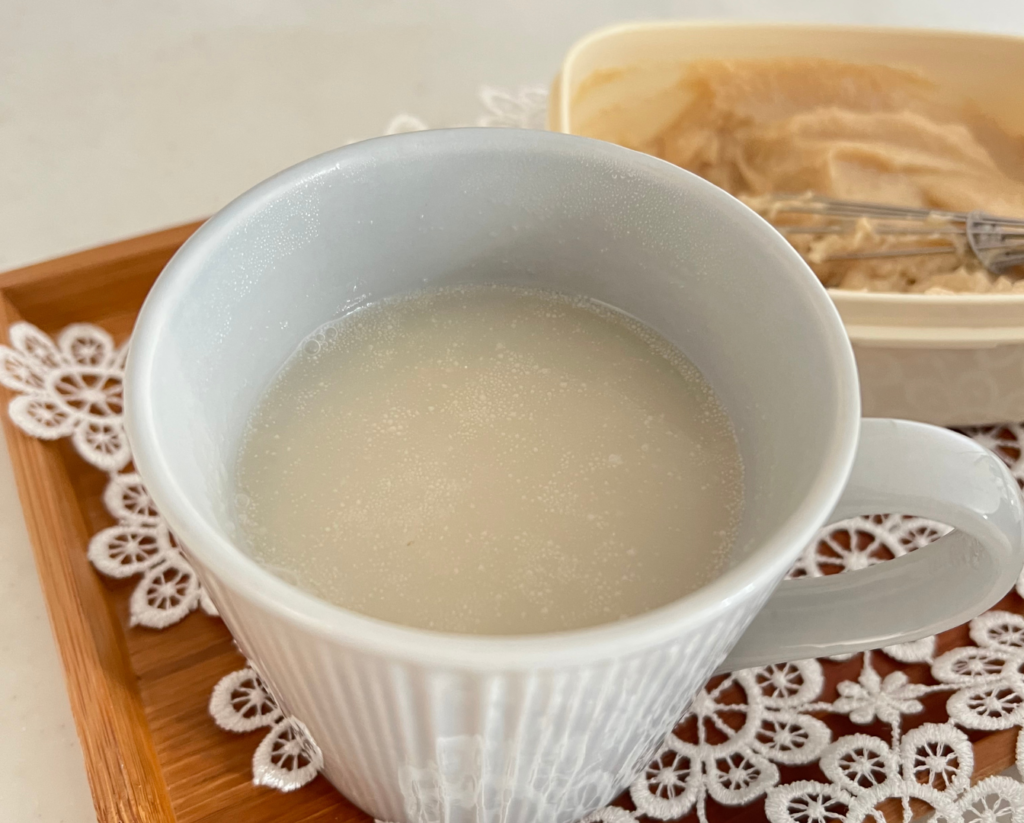
Arrowroot starch is one of the key components of Eastern Medicine to cure colds. So it works to keep you healthy with the natural ingredients. You are going to burn from the inside and sweat!
Disclaimer
If you have specific health concerns or conditions, it’s advisable to consult with a healthcare professional or a registered dietitian before making significant changes to your diet or incorporating new ingredients. Additionally, keep in mind that the health benefits of Sake Kasu should be considered in the context of an overall balanced and varied diet.
